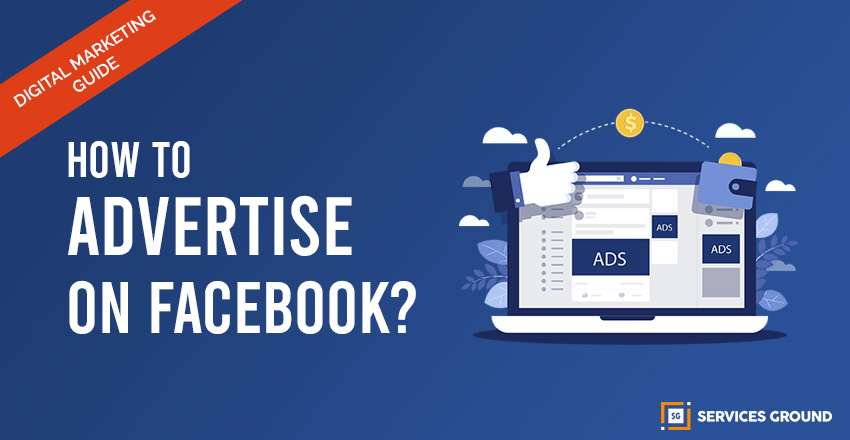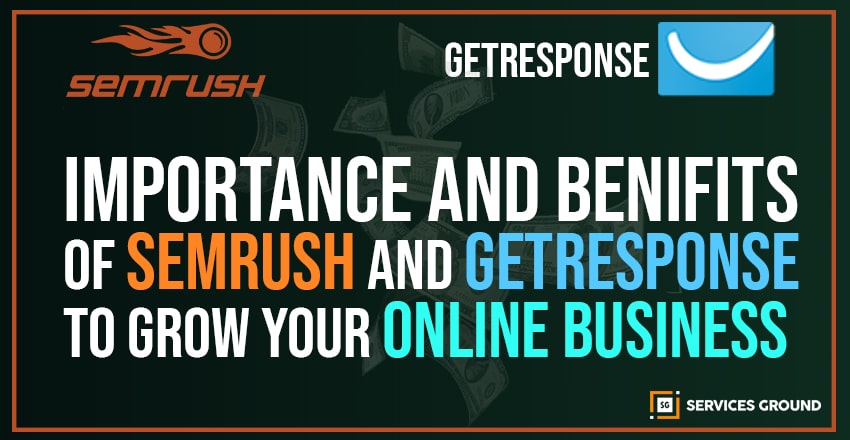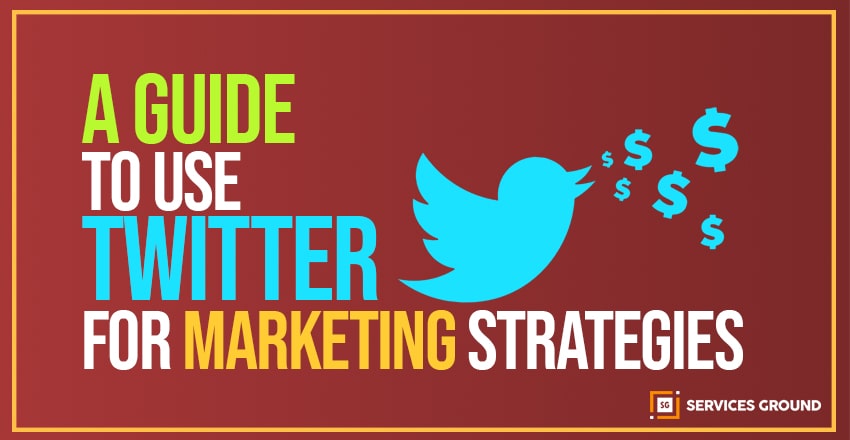Let’s start from the beginning you need to know about advertising on Facebook from planning your first Facebook ad to innovative strategies. You can connect with your target audience on the largest social network through Facebook advertising.
How to Advertise On Facebook
Set up your Facebook business account.
- Determine the campaign type you want to run, either cold traffic campaigns or re-marketing campaigns.
- Dictate the amount of consumer awareness that you are targeting,, either awareness, consideration, or conversion as outlined by Facebook’s ad manager.
- Determine your ad format, either single image, video ad, carousel, or collection.
- Choose your targeting based on Facebook’s options, including interest and brands, life event, age and gender, specific location, a specific language, or lookalike audience.
- Build out your Facebook ad creative.
- Determine the overall budget and your return on ad spend KPI.
- Track and measure results using the Facebook pixel and a custom conversion.
- Monitor the campaign and optimize to hit your desired return on ad spend. You have to modernize ad creative or targeting criteria.
Types of Facebook Ads
- Image Ads
- Video Ads
- Video Poll Ads
- Carousel Ads
- Slideshow Ads
- Collection Ads
- Instant Experience Ads
- Lead Ads
- Dynamic Ads
- Messenger Ads
- Stories Ads
- Playable Ads
Image Ads
These simple ads are a great way to get started with Facebook advertising. You can generate an ad with a few clicks by improving a current post with a picture from your Facebook Page.
● Image ads may be simple, but that doesn’t mean they have to be boring.
Video Ads
Video ads can run in News Feed and Stories, or they can appear as in-stream ads in longer Facebook videos. Ads can appear to your team or your product is working.
● Your video ads don’t need to use filmed video footage. You can also make graphics or other animations to retain the attention of the audience or describe your offer.
Video Poll Ads
This mobile-only Facebook ad format incorporates an interactive component with video polls. It’s a new kind of Facebook paid to advertise, and data shows that these video poll ads can increase brand knowledge more than regular video ads.
Carousel Ads
A carousel ad uses up to 10 images or videos to showcase your product or service. Use this format to focus on different advantages of one product, many different products, or you can use all the images to make one large panorama image.
Slideshow Ads
Through Slideshow ads create short video ads easily from a collection of photos, text, or existing video clips. You can select photos from Ads Manager stock if you don’t have your images.
● Slideshow ads have eye-catching motion, just like videos, but use five times less bandwidth, so they load well even for people on slow internet connections. They’re an easy, low-impact way to draw attention.
Collection Ads
These paid ads, which are offered only for mobile devices, allow you to showcase five products that customers can click to buy.
Instant Experience Ads
● Instant Experience ads used to be called Canvas. It’s a full-screen ad format that opens 15 times quicker than a mobile website outside of Facebook.
● You can also link to additional Instant Experiences, so people have access to even more instant mobile content.
Lead Ads
Lead ads are not just a form but more than that. Its help you to drive objectives like brand awareness and reach to customer purchase. It is specifically designed for mobile phones to make it easy for the audience to give you their contact details without a lot of typing. It helps collect newsletter subscriptions, signing someone up for a trial of your product
Dynamic Ads
Dynamic ads allow you to promote targeted products to the customers most likely to be interested in them.
● For example, if someone from the audience has viewed a product page or placed a product on your website in their shopping cart, but then neglected the purchase, dynamic ads for that specific product will emerge in their Facebook feed.
● This reminds the potential customer to complete the purchase and can be a very effective Facebook marketing strategy.
Messenger Ads
● Facebook Messenger ads give you access to the 1.3 billion people who use Messenger every month. While making your ad, clearly select Messenger as the required placement. You also need to select a Facebook feed.
● You can also run “click-to-Messenger” ads in the Facebook feed. These ads attribute the CTA button that opens a Messenger chat with your Facebook Page, so people can have a conversation with one of your customer service.
How to Advertise On Facebook
To Advertise on Facebook you must have a Facebook business page, If you don’t have a business page create it first. Then go straight to the Facebook Ads Manager or Business Manager to create your Facebook ad campaign.
Choose Objective
- Brand awareness: Aware of your audience by introducing the brand to them.
- Reach: Display your ad to your audience as much possible.
- Traffic: Manage traffic to your web page, app, or Fb Messenger conversation.
- Engagement: Get a large audience to increase the number of post-commitments or Page Likes, improve attendance at your event, or invite people to claim a special offer.
- App installs: Ask people to install your application.
- Video views: Push people to view your video content.
- Lead generation: Capture interest in products and services in your sales funnel.
- Messages: Motivate people to contact your business through Facebook Messenger.
- Conversions: Push people to subscribe to your list or buy your products, with your app, or in Fb Messenger.
- Catalog sales & Store traffic: Create a catalog to show people and connect your product catalog with your Facebook ads, and drive nearby customers to your physical stores.
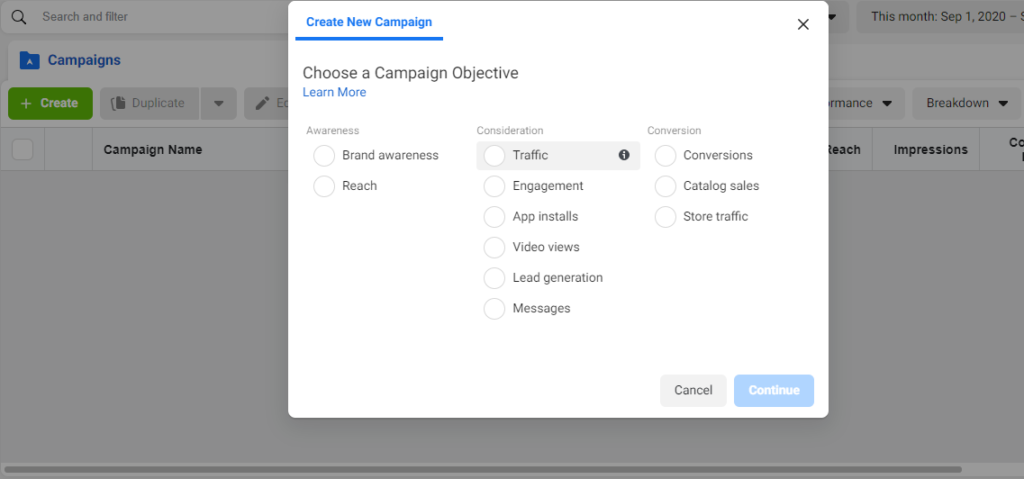
Name Your Campaign
● Scroll down to name your Facebook ad campaign and choose whether to set up an A/B split test and then select whether to turn on budget optimization. If you’re using multiple ad sets then this option can be helpful, but for now, you don’t need to turn on.
● For the Engagements objective, you’ll also choose whether to focus on post engagement, page likes, or event responses. For this example, we’ll choose Page likes.
Set Up Your Ad Account
When you set up your Ad account, a button will appear. Click that button to move on to the next step.
Target Your Audience
Name your Facebook Ad campaign according to your target audience, you will name your Facebook ad campaign and select which Page to promote.
● Scroll down to start building the target audience for your ads.
● You will see the first option is to add a custom audience of people who have already interacted with your business on or off Facebook. There is a separate guide to walk you through Facebook custom audiences, where we’ll concentrate on the targeting options.
Choose Your Facebook Ad Placements
Come down to select where your ads will appear. Use automatic placements if new to Facebook advertising. This option will place your ads around Facebook automatically, Instagram, Messenger, and the Audience Network when they are likely to get the best results for:
· Quality ranking
· Engagement rate ranking
. Conversion rate ranking
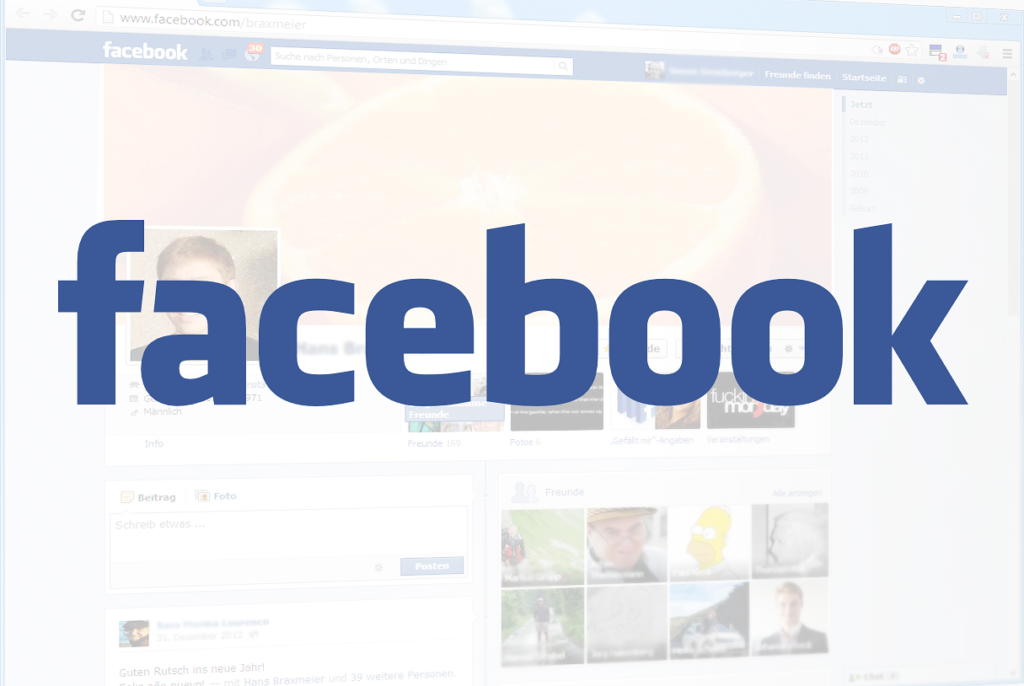
Set Your Budget and Schedule
Set your budget to decide how much money you need to spend on your Facebook ad campaign. You can select whether you have a daily budget or lifetime budget, you can also set the start and end dates of the budget if you want to schedule your ad in the future.

